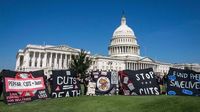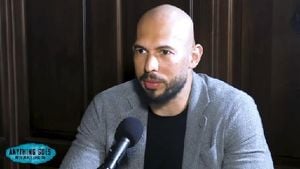Across the United States, a quiet crisis is unfolding in the fight against HIV. While major medical advances and targeted prevention programs have steadily reduced new infections and deaths in recent years, a wave of federal funding cuts is now threatening to undo years of hard-won progress. From the bustling clinics of metro Atlanta to the community health centers of Wisconsin, experts and advocates are sounding the alarm: unless urgent action is taken, the nation could see a resurgence of a disease many thought was under control.
In metro Atlanta, the numbers paint a stark picture. As of late September 2025, HIV diagnoses are on the rise, even as the financial lifelines that support research and treatment are being pulled away. According to a report by 11Alive, clinics that have served HIV patients for years are losing critical funding due to sweeping federal grant cuts enacted by the Trump administration. These cuts, part of a broader push to slash millions from diversity, equity, and inclusion efforts, have left public health practitioners deeply concerned that people will be pushed out of care.
Dr. Daniel Driffin, a physician on the front lines in Atlanta, described the impact with unvarnished clarity. “We have roughly 18,000 to 20,000 people living with HIV in the Atlanta metropolitan area,” he explained. “There’s different programs that provide free healthcare services that are truly on the verge of being wiped away.” The uncertainty and constant changes in funding, as the fight over the cuts winds through the legal system, have left the future of clinics across Georgia in doubt. “This turbulence within the system of being defunded, having money, the money being delayed—all of that ultimately creates additional barriers and it pushes people out of care and keeps them from being the healthiest they can be,” Driffin said.
This is not just a story about numbers or budgets—it’s about real people whose lives hang in the balance. Barry Sermons, an HIV-positive student at Georgia State University, credits free clinics in Atlanta with saving his life after a diagnosis in 2003. “I was able to go see doctors, and I was able to get my medications,” Sermons told 11Alive. “So those things really saved my life.” Sermons now studies film, hoping to tell stories about overcoming adversity and the importance of community support. Despite the funding cuts, he remains hopeful: “We can take care of our own village. Now we may not have the funding we need, but if we learn how to support each other and take each other along, then we can keep the virus and the spread at bay.”
The funding crisis is not confined to Atlanta. According to MedPage Today, the Centers for Disease Control and Prevention’s (CDC) Division of HIV Prevention is effectively in shutdown mode due to the same federal funding cuts. The Ending the HIV Epidemic (EHE) initiative—a flagship program launched by President Trump in 2019 with the goal of ending the HIV epidemic in the U.S. within a decade—is now at risk. In 2023, EHE had a budget of $613 million, with $220 million administered by the CDC. Yet, the Trump administration’s proposed budget for fiscal year 2026 eliminates funding for the CDC’s HIV prevention and tracking programs, amounting to over $1.5 billion in cuts.
The consequences of these decisions are already being felt. John Brooks, MD, former chief medical officer of the CDC’s Division of HIV Prevention, warned, “People often think HIV is taken care of in the U.S., that it’s not a threat any longer. But like many diseases that we’ve been able to help control ... the minute you pull back that prevention, it can come back.”
Recent data underscores how much is at stake. From 2018 to 2022, new HIV infections in the U.S. dropped by 12%, falling to 31,800 new cases in 2022, according to the CDC. In the areas hardest hit by HIV, the decline was even greater at 21%, and among young people—a particularly vulnerable group—new cases dropped by 30%. HIV deaths also fell by 19% during that period. “Not only are we preventing new infections, but we’re doing better at keeping people alive,” Brooks said.
Yet, the infrastructure that made these gains possible is now in jeopardy. The CDC’s HIV prevention division suffered mass layoffs on April 1, 2025, and its communications department, responsible for outreach and education, has yet to be reinstated. Many of the division’s more than 400 researchers have been brought back thanks to a court injunction, but the uncertainty has left staff demoralized and programs stalled. Carl Schmid, executive director of the HIV+Hepatitis Policy Institute in Washington, D.C., called the situation “very sad for our country,” warning, “It would be absolutely devastating to stop all testing, stop all surveillance, and stop all education.”
The funding debate has reached Congress, where the Senate has proposed fully funding the National Center for HIV, Viral Hepatitis, STD, and Tuberculosis Prevention (NCHHSTP) at $1.3 billion. The House, by contrast, has offered only about $350 million, eliminating all funding for HIV prevention and the EHE initiative. Without federal support, states, nonprofits, and other funders are unlikely to fill the gap.
Wisconsin, a state that has managed to contain its HIV epidemic to about 300 new diagnoses a year, now faces its own reckoning. Brandon Hill, president and CEO of Vivent Health, told Wisconsin Public Radio that federal funding cuts could cause new diagnoses to rise. “Ultimately, people will not be able to get the level of care or HIV prevention services that they’re currently receiving—the one that’s currently keeping us at less than 300 new diagnoses in Wisconsin,” Hill said.
Pre-exposure prophylaxis (PrEP), a drug approved by the FDA in 2012, has been a game-changer in HIV prevention, with over 90% effectiveness when taken as directed. But Hill notes that uptake remains uneven, especially among transgender, gay, or bisexual men of color—groups that continue to experience new infections. “We need, I think, almost a million people who would be indicated for PrEP to take up PrEP in order for us to successfully reduce all new cases or new diagnoses in the U.S. So there’s a huge gap here, and the folks you mentioned are exactly the population that are in that gap,” Hill explained.
The financial strain is palpable. From February to June 2025, the federal government sent no new award letters or reimbursements for HIV-related grants, disrupting services and workforce stability across the country. At Vivent Health, careful budgeting and multiple revenue streams—including grants, Medicaid, commercial insurance, and philanthropy—have allowed them to avoid cuts so far. But Hill acknowledges that many organizations are not so fortunate. “If you only have philanthropy or grant funding, those organizations are more likely to feel these shifts. We will undoubtedly feel them, but they might hit (other organizations) more directly.”
With about 40% of people living with HIV relying on Medicaid, cuts to both Medicaid and federal HIV funding threaten to create what Hill calls a “dire strait.” As the nation waits to see how Congress and the administration resolve the budget impasse, advocates warn that the consequences of inaction will be measured not just in dollars, but in lives lost and communities left behind.
The fight against HIV in America has always demanded vigilance, compassion, and resources. Now, as funding dries up and uncertainty grows, those on the front lines are left to hope that the lessons of the past will not be forgotten—and that the country will not allow a preventable epidemic to return.




